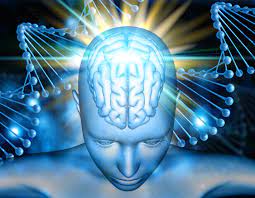Endometriosis is a disorder where the tissue of the endometrium grows outside the uterus, in regions of the body where it shouldn't. This tissue usually grows in the ovaries, fallopian tubes, and the pelvic area, but it can also invade other tissues in the body. In this article, we will explore the causes, symptoms, diagnosis, and treatment options for endometriosis.
Causes of Endometriosis
Endometriosis has a genetic component and can be hereditary. Certain genes associated with this disease are also linked to cancer. However, the exact cause of endometriosis is still unknown.
Symptoms of Endometriosis
Approximately 10% of women in their reproductive years suffer from endometriosis, which translates to 190 million women worldwide. However, not all cases are symptomatic or diagnosed. Some of the common symptoms associated with endometriosis include:
Painful Menstrual CrampsWomen with endometriosis may experience painful menstrual cramps that are different from their usual menstrual cramps. The pain may become more severe with time and may radiate to the lower back or thighs.
Painful IntercoursePainful intercourse is another common symptom of endometriosis. The pain may occur during or after sex, and it may feel deep and intense.
Heavy Bleeding During PeriodsWomen with endometriosis may experience heavy bleeding during their periods, which is also known as hipermenorrea.
InfertilityEndometriosis can also cause infertility, especially if the growth of endometrial tissue is blocking the fallopian tubes.
Diagnosis of Endometriosis
There are no reliable biomarkers for endometriosis, and the diagnosis can be made through non-invasive methods like ultrasounds or MRI scans, or through invasive procedures like laparoscopy. During laparoscopy, a thin tube with a camera is inserted into the abdomen to look for signs of endometriosis.
Treatment Options for Endometriosis
The treatment for endometriosis depends on the severity of the symptoms and the desire for fertility. Some of the treatment options include:
Pain MedicationsOver-the-counter pain medications like ibuprofen or naproxen can help relieve the pain associated with endometriosis.
Hormonal TherapyHormonal therapy is another treatment option that can help regulate menstrual cycles and reduce the growth of endometrial tissue.
SurgeryIn severe cases, surgery may be necessary to remove the endometrial tissue. In some cases, a hysterectomy may be recommended.
Conclusion
Endometriosis is a common disorder that affects millions of women worldwide. It is important to seek medical attention if you experience symptoms like painful menstrual cramps, painful intercourse, heavy bleeding during periods, or infertility. Early diagnosis and treatment can help manage the symptoms and improve the quality of life.
FAQs
-
What is endometriosis? Endometriosis is a disorder where the tissue of the endometrium grows outside the uterus.
-
What are the symptoms of endometriosis? Some of the common symptoms associated with endometriosis include painful menstrual cramps, painful intercourse, heavy bleeding during periods, and infertility.
-
How is endometriosis diagnosed? There are no reliable biomarkers for endometriosis, and the diagnosis can be made through non-invasive methods like ultrasounds or MRI scans, or through invasive procedures like laparoscopy.















